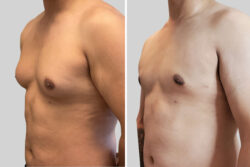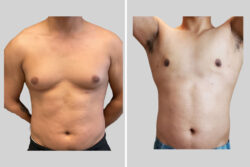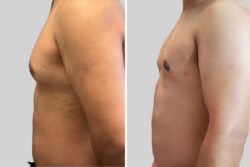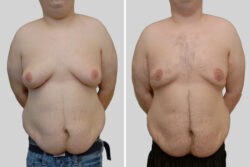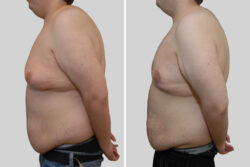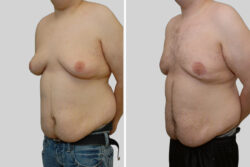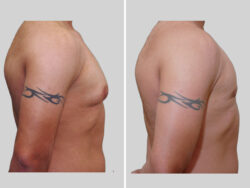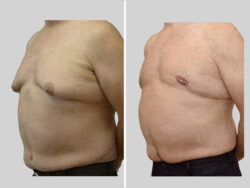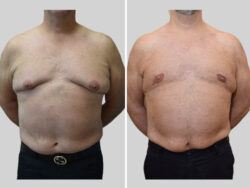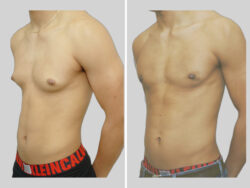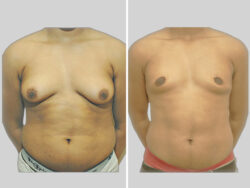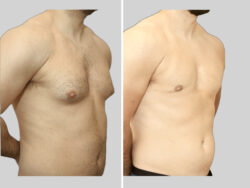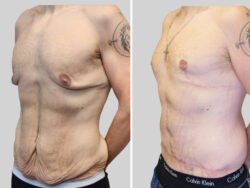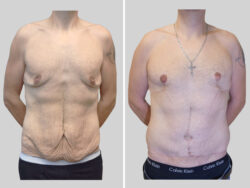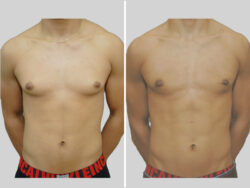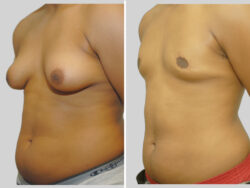Gynecomastia
Dr. Goldberg's personal story with Gynecomastia
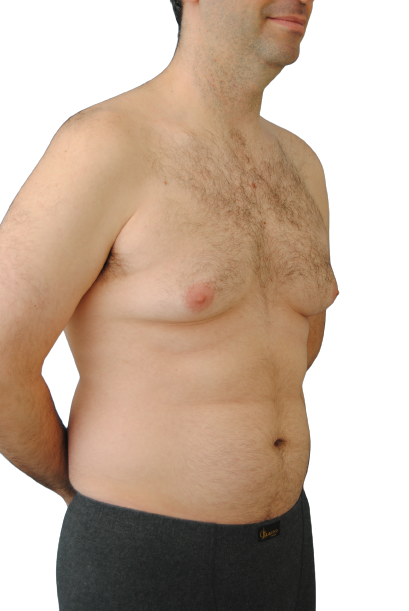
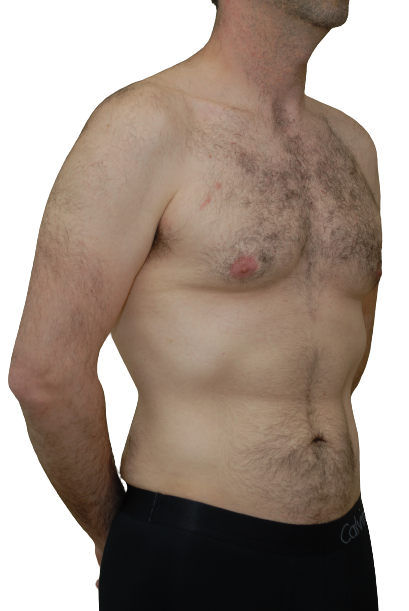

The two most common procedures Men seek in my practice are removal of male breasts (gynecomastia) and liposuction of the spare tire (abdomen and flanks).
Society has high expectations of Men, but Plastic Surgery is still a taboo topic. So, I wanted to share my own personal surgery journey. In 2010 I decided to change my lifestyle and start being more physically active and also more mindful of my nutrition. After losing around 20 lb I went to a trusted colleague to talk about my chest and spare tire.
These issues had started as a teenager, and I could never seem to get rid of it. These are problem areas for guys. Especially male breasts, which cannot be eliminated through just diet and exercise. The only way to remove the underlying gland tissue responsible for this disorder is surgery. I underwent gynecomastia removal and liposuction of the abdomen in 2012.
The surgery made a huge difference for me and my self-confidence. I went on to lose another 30 lb and have maintained my healthy lifestyle since then. I share this story with Men who come to my practice as it helps make them comfortable with something that has caused them distress for many years and yet they never felt comfortable talking about or doing something about. It’s one of my favorite operations to do because I have a personal understanding of how much impact this has for Men.
I’d be happy to see you in consultation to discuss this.
What is Gynecomastia?

Excessive breast tissue in a male is called Gynecomastia, and this can develop during puberty or later in life. It may be related to weight gain or normal hormonal changes, but some underlying abnormal hormonal causes must be considered. For these men the presence of breasts is a source of embarrassment, and male breast reduction with minimal scarring is the best alternative.
What are the benefits of Gynecomastia surgery?
Male breast reduction (Gynecomastia surgery) reduces both fat and breast tissue, and improves definition of the chest. By removing overlying abnormal tissue, the underlying chest (pectoral) muscles can be better seen, and work-out of these muscles will produce noticeable results that would otherwise be hidden behind fat. With the exception of the inconvenience of having to wear a compression binder over the chest for 4 weeks, the recovery is usually very easy, and most patients have very little discomfort. The results of male breast reduction are immediate and long lasting.

What is Gynecomastia surgery?
The procedure is done under general anaesthetic or intravenous sedation as day surgery. The operation takes about 1.5 hours, and you need to stay for about 2 hours after surgery for recovery. After you are asleep, but before beginning surgery, Dr. Goldberg injects a long acting local anaesthetic in order to prevent sensitization of pain nerves and minimize discomfort after surgery. The procedure has 2 components. The first part involves the use of Liposuction to remove the fat tissue from the breast and chest area. Once the fat is removed, the second part involves cutting out the extra breast tissue, which is too dense and fibrous to be suctioned out with the liposuction. The excision of breast tissue is done through an incision just along the border of the nipple-areola at the edge between the dark and light tissue. This helps to camouflage the scar. For some patients with very excessive Gynecomastia some excision of skin is required a well as a part of the breast reduction, and this may require a scar that extends onto the chest. Very few patients need this. At the end of surgery a tight dressing is applied that wraps around the chest and compresses the area of the surgery.
What is the recovery like for male breast reduction surgery?
You will be able to go home the same day of surgery. Dr. Goldberg prescribes several medications to ensure your comfort. These usually include Celecoxib and Percocet to control inflammation and pain, and an antibiotic to help prevent infection. You will need to keep the dressing on for 1 week until you return for a follow-up visit. You can return to light activity right away. However, you must wear a tight binder around your chest and avoid strenuous activity for 4 weeks after surgery.

What are the risks associated with Gynecomastia surgery?
There are general risks with male breast reduction such as bruising, bleeding, infection, and risks associated with general anaesthetic. There are also some specific risks. There can be collection of blood or body fluid in the area of surgery. This may require drainage with a needle, or very rarely even further surgery in the worst case. If a patient gains weight in the future, there will also be weight gain in the chest. However, no new breast tissue will ever grow where it has been removed. Most often sensation of the nipple is unchanged, but there can be some decrease in sensation, though this is usually temporary. Other more minor risks can be discussed with Dr. Goldberg.
What are the alternatives to Gynecomastia surgery?
For some very rare causes of Gynecomastia hormonal treatment or other surgery may be needed. For the vast majority of cases there is no non-surgical alternative. For some cases liposuction alone may be adequate.

 Face
Face Body
Body Breast
Breast Non-Surgical
Non-Surgical Hair Transplants
Hair Transplants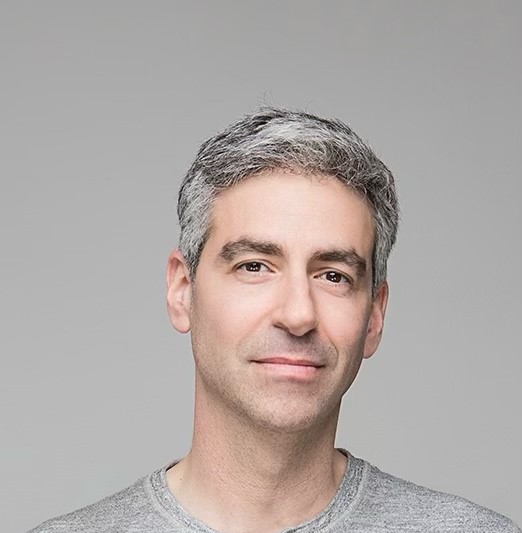 Dr. Cory S. Goldberg
Dr. Cory S. Goldberg Our Staff
Our Staff Policies
Policies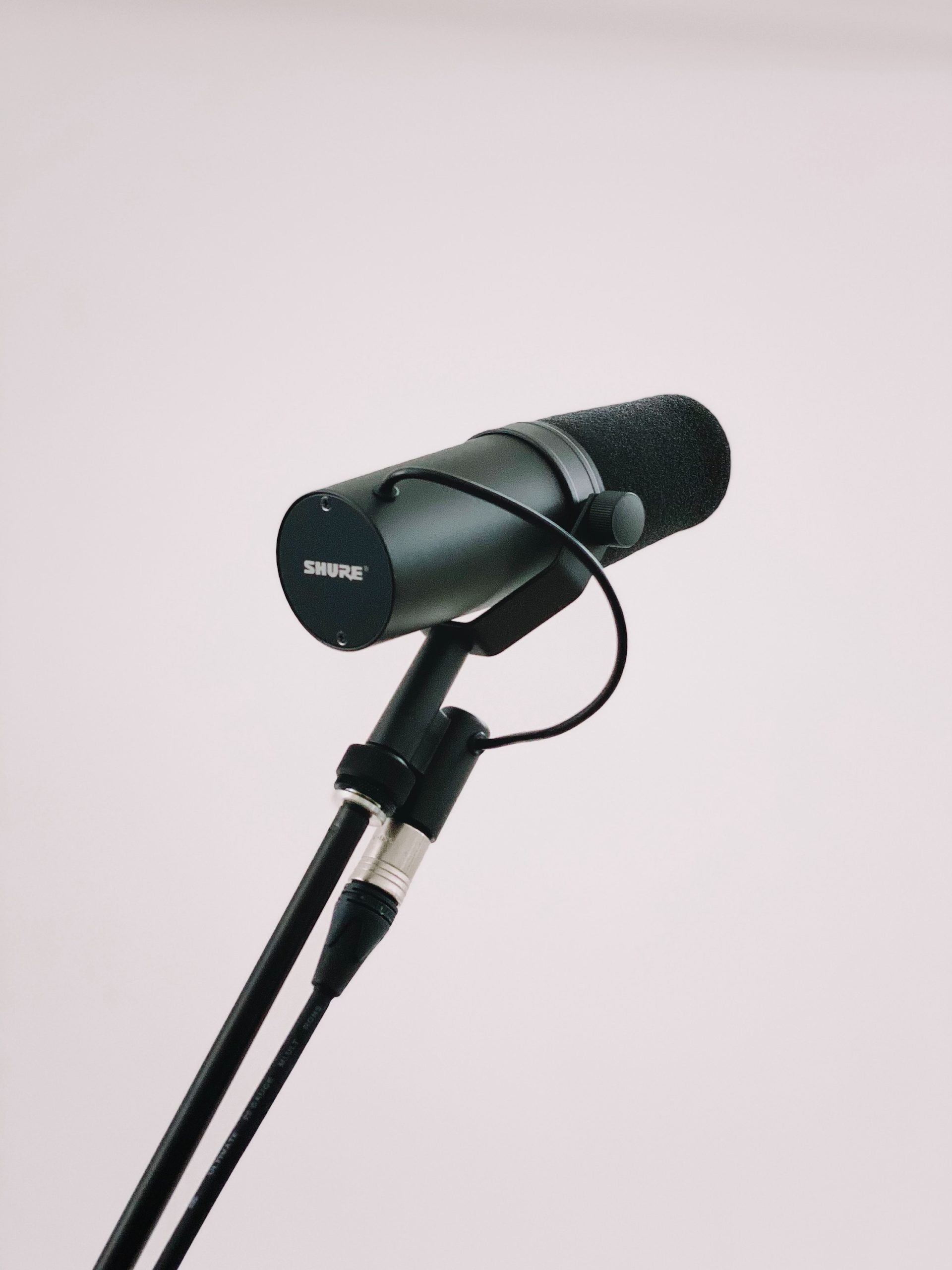 Media
Media Reviews
Reviews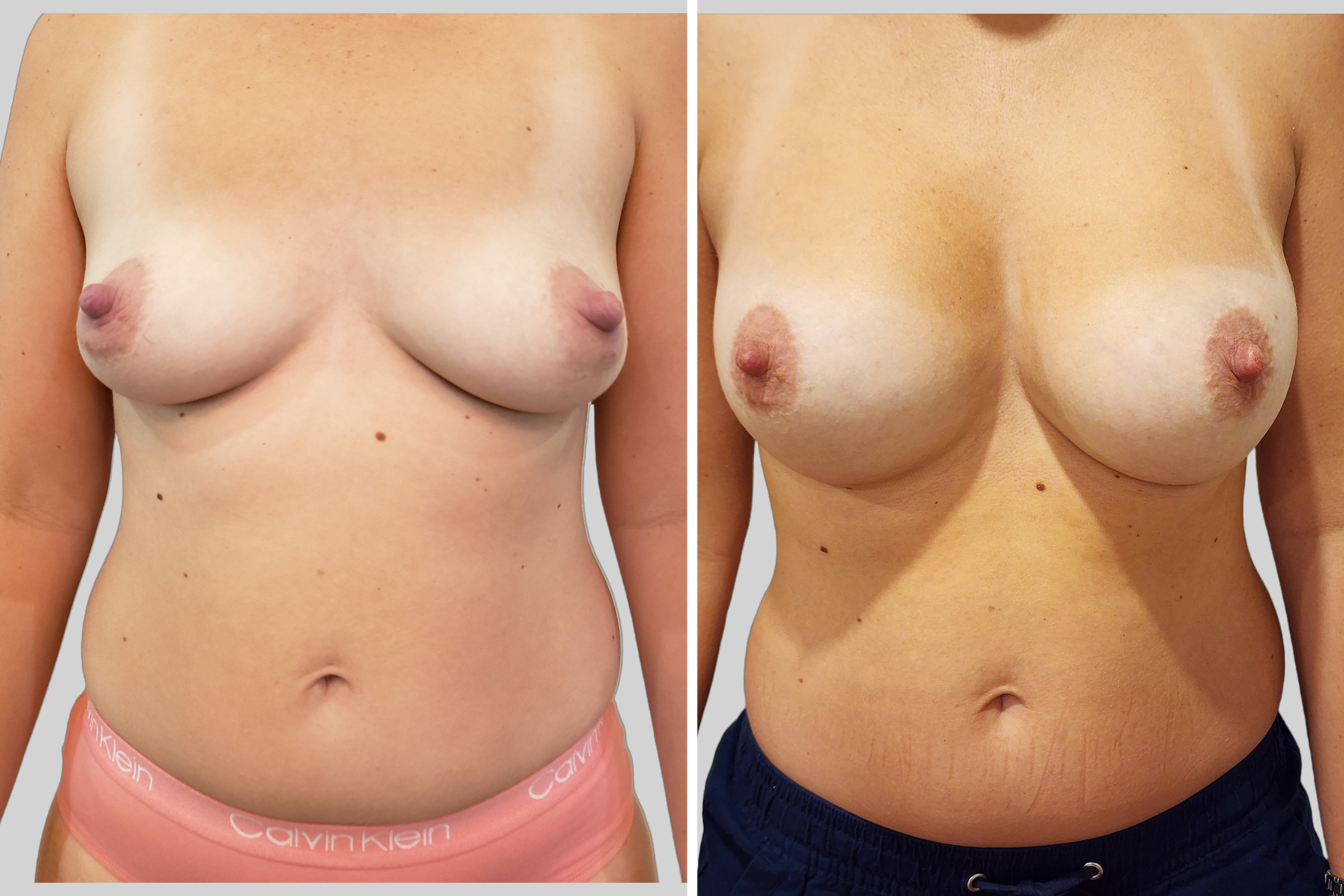 Breast Gallery
Breast Gallery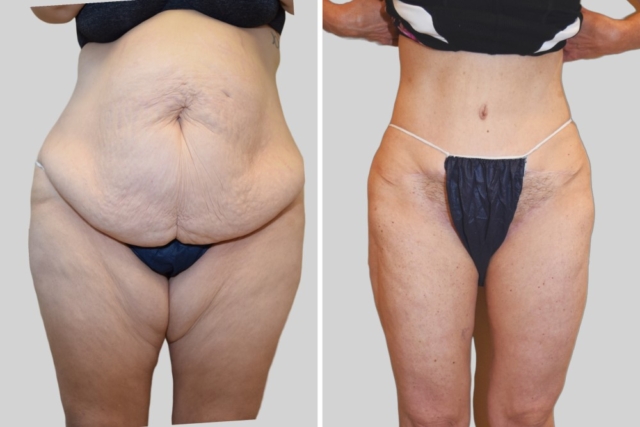 Body Gallery
Body Gallery